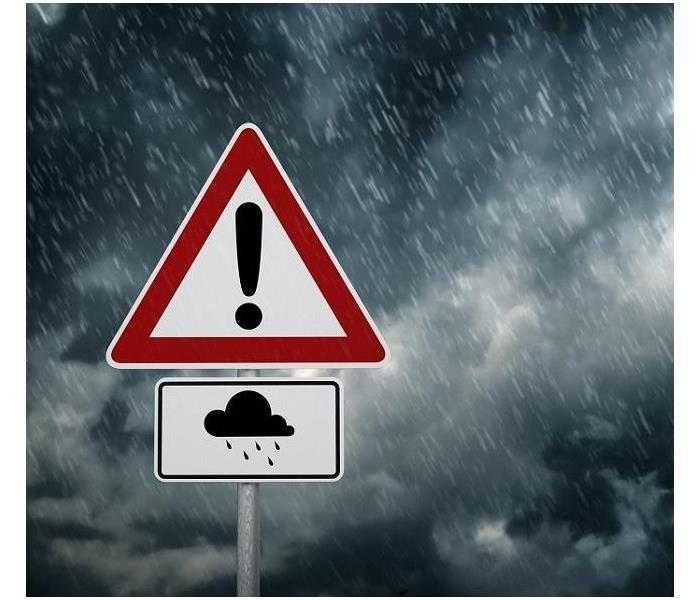What is the Best Way to Handle Water Coming into My Attic?
5/13/2020 (Permalink)
SERVPRO Technicians Know Storm Water Entering Your Fort Lee Home can Cause Severe Damage Needing Professional Restoration Services
When big storms deliver considerable damage to Fort Lee properties, one thing each situation has in common is the water cleanup needs to begin as soon as possible. If a roof gets damaged from high winds or hail, water can start to enter and run downward following the rules of gravity and causing issues to ceilings, walls, and anything in its path.
Can Insulation Get Restored from Storm or Flood Damage?
A few factors figure into the insulation outcome in your Fort Lee home affected by storm or flood damage. The type of insulation is one of the most significant determinants. Unless it is fiberglass insulation, then it may be a loss. SERVPRO techs can collect the fiberglass insulation and dry it outside the loss area and prep it for reinstallation.
Another consideration is the type of water affecting the insulation. If it is wet from rainwater from a roof leak or broken window, it can get restored in many cases. However, if groundwater is saturated with the insulation, no matter what the construction materials are, it requires the removal and disposal of a biohazard.
Actions to Secure a Property from Further Water Loss
When storm damage happens, the technicians work quickly to ascertain all areas that are exposed and need protection from allowing further loss within the home. Common tactics include:
- Placing tarps over areas of damaged roofing
- Using heavy gauge plastic or boards over broken windows
- Containment around loss areas to stop the spread of airborne droplets
- Arrange for removal of fallen tree limbs
What to Expect During Mitigation in an Attic
When water loss events occur in a Fort Lee attic, the first goal of the SERVPRO techs is to limit any further loss to the home. After tarping over any leaks in the roof to deter any more water from entering, they can use a vacuum with a specialized attachment for insulation collection. Next, they move on to use their equipment to remove any remaining water that seeped under the insulation. When mitigation efforts are underway in an attic, due to the amount of dirt and dust, the techs commonly put up barriers over doorways if anything gets kicked up from all the activity, it does not wind up in the home.
The ceilings directly below the loss area get inspected to see if any drip-through occurred. The techs do not rely only on visual inspections but use various types of detection equipment, including Forward-looking infrared (FLIR) cameras that readily point out areas that are cooler with water. This equipment is ideal to use to "see" behind walls, within floor joists, and under flooring.
Signs of Water Loss in Structural Elements in a Home
When water migrates from an attic space downward, it leaves tell-tale signs along the way. One of the most alarming is water dripping through a ceiling onto furnishings or the floor below. Other signs include:
- Stains on walls and ceilings
- Paint "bubbles"
- Warped or buckled sheetrock
- Sagging ceilings
- Loose or fallen ceiling tiles
Drying Configurations are Unique to Each Job Site
When drying a property with storm damage, SERVPRO technicians determine the exact scale of the area that requires drying. They can deploy air movers en masse over a broad area or build tented or tubed drying chambers to direct warm, dry area over a specific, targeted area. Our goal is the attainment of preset drying targets as fast as possible at drying a loss area. Achieving drying goals lessens the chances for additional loss and secondary issues that can occur when there is too much time between the first loss event and the time to dry it.
Handling Contents Affected by Water
When water drips down from an attic leak and gets furnishings wet, SERVPRO techs test the material of upholstered items and carpet to determine if they are suitable for the most common methods of drying and cleaning. Techniques such as standing sofa cushions on their ends during drying assist with speeding along the mitigation process. Then problems as water spots and stains are addressed to ensure we restore the pieces to their preloss condition. As a final step, the techs apply any odor control methods to handle any remaining water odors resident in the property.
SERVPRO of Fort Lee at (201) 496-6024 for assistance with storm and flood damage in your home. The technicians are available 24/7, arrive quickly, and restore your home to its preloss condition.






 24/7 Emergency Service
24/7 Emergency Service
